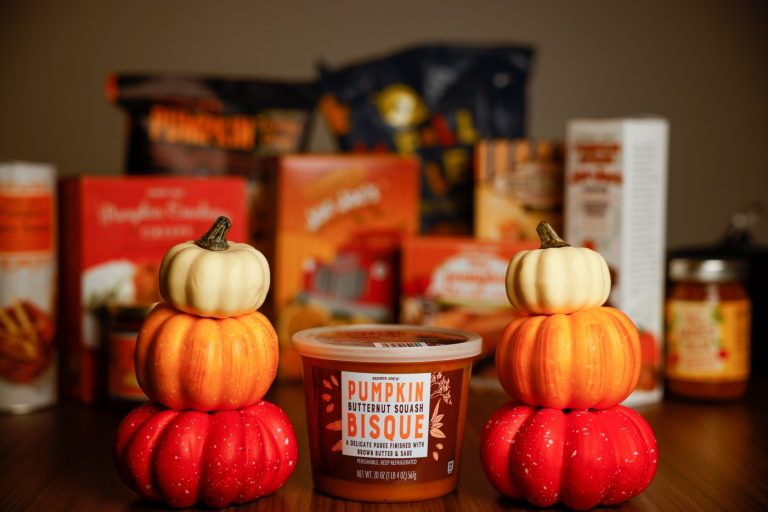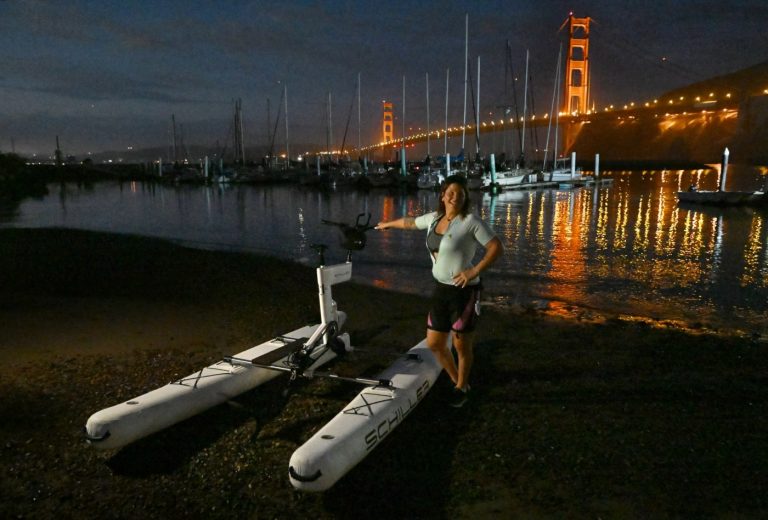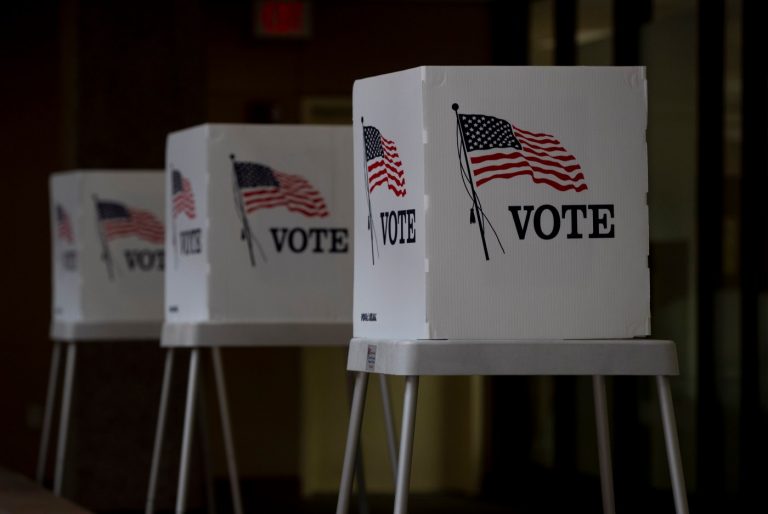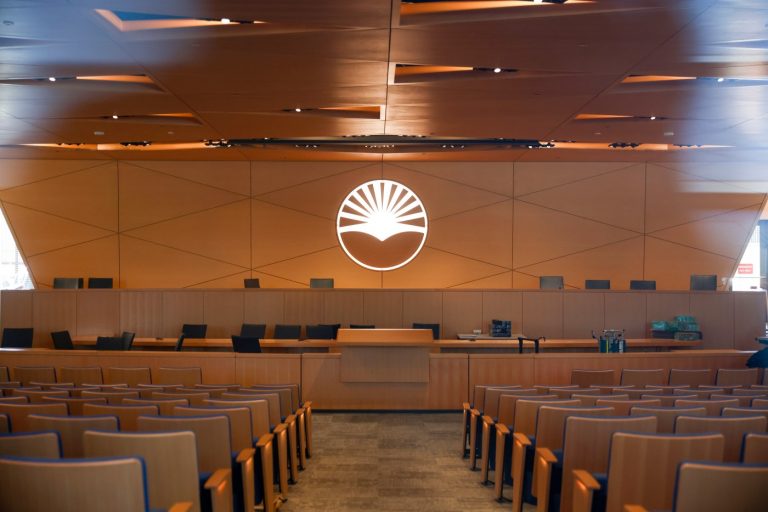One California voter tweeted: “‘Help me fight climate change’ says the campaign mailer going straight into the recycle bin.”
Then there’s the Facebook user who called “snail mail” campaign fliers “mostly a nuisance these days,” and said her main response to them is this question: “Don’t these people care even a bit about the environment?”
If you’re a registered voter, and particularly if you live in a district with a competitive primary race, your mailbox has likely been flooded with political campaign fliers.
Like all mail, each of these fliers leaves a small carbon footprint. Trees are felled to make their paper and gas-powered vehicles spew carbon to deliver them. That’s why climate groups encourage everyone to turn off paper billing, to opt out of junk mail, and to “think before you print.”
But despite the growing role that digital advertising now plays in modern elections, the decades-old tradition of mailing out campaign fliers shows no signs of slowing down.
That’s true even of candidates who use those mailers to tout their passion for fighting climate change.
“Campaigns are notorious for being slow adapters,” said Dan Schnur, who teaches politics at USC and worked as a strategist on past presidential and gubernatorial campaigns.
“But there still is significant residual value in old fashioned snail mail,” he added. “So a campaign that moves away from it for philosophical or ideological reasons is potentially compromising their effectiveness.”
Even groups like California Environmental Voters, which grades candidates on their action around climate change, aren’t yet pushing for campaigns to completely ditch mailers.
“It’s an important tradeoff,” said Mike Young, senior political and organizing director for the environment group.
While he’s glad to see people asking these questions, Young said, “Electing someone who’s going to do more and be strong on environment issues has a much bigger impact than not sending out a couple mailers in a race.”
Other campaign choices, such as refusing to accept support from fossil fuel companies, also pack a much bigger punch, Young added.
There’s still a list of choices campaigns can make to ensure their mailers are more environmentally friendly, though. And a random sampling of recent print ads for local races shared with Southern California News Group or posted to the Los Angeles City Ethics Commission site shows many candidates aren’t taking even the simplest step on that list.
Take the 31st Senate District in northwest Riverside County. Democrats Sabrina Cervantes and Angelo Farooq are competing with GOP challenger Cynthia Navarro to see which two candidates will advance from the March 5 primary to this fall’s general election. Both Cervantes and Farooq say, if elected, they’ll prioritize climate policies. But both campaigns also are sending lots of mailers that don’t include the “chasing arrows” symbol that signifies something is recyclable. And while nearly all types of mail can be recycled, whether it says so or not, including that symbol in a flier’s design can help remind voters not to toss mailers in the trash.
A spokesman said all of Farooq’s campaign mailers are recyclable. As for the volume of mail and lack of recycling symbols, he said, “In this race, voters are more concerned about who will best represent them in Sacramento.” Cervantes’ campaign didn’t respond to a request for comment.
Over in Los Angeles County, the recycling symbol does appear on mailers for both Nick Schultz and Steve Pierson, two Democrats in a crowded field for the open 44th Assembly District.
That’s the least candidates who claim to support the environment can do when it comes to lowering the carbon impact of their mailers, said Fred Smoller, a political science professor at Chapman University who helped found the Orange County Sustainability Decathlon.
Other steps can include printing brochures on recycled material and using sustainable ink, arranging for delivery via electric vehicles, culling mailing lists so fliers only go to voters in their district and reducing the size and overall volume of the mail they send. They also can add a line in their mailers that touts and promotes those choices.
While making sure campaign mail is narrowly targeted can save money, the rest of these climate-friendly moves do typically make fliers more expensive to produce or eat up valuable space that otherwise might be used to promote the candidate. Some green-flier steps also sometimes aren’t feasible, Young said, noting that sturdy recycled cardstock, for example, isn’t always available.
Printing and distributing 10,000 campaign mailers typically generates around 5 tons of carbon, according to calculations by Sustainable Tallahassee, a Florida nonprofit that promotes recycling. That’s a bit more than a gasoline-powered car emits in an average year, per data from the Environmental Protection Agency.
Sustainable Tallahassee developed a Carbon Neutral Campaign program more than a decade ago where candidates can pledge to track emissions from their campaign activities. Among other things, these include the miles they travel, the electricity they use and the fliers they mail out. (Even sending an email generates a tiny carbon footprint!) Participating candidates are encouraged to take whatever steps they can to reduce emissions by, say, traveling in an electric vehicle. Then they commit to buying carbon offsets to balance out whatever is left, so their campaigns become carbon neutral.
Politicians aren’t always known for being great at practicing what they preach.
Sacramento Bee opinion columnist Robin Epley had some fun in the fall noting how people weren’t allowed to bring reusable water bottles into the California Democratic Convention due to security concerns, with plastic cups used instead. So, while programs like Sustainable Tallahassee’s Carbon Neutral Campaign can reduce the climate footprint of elections, supporters say taking those steps can be as much about the message they’re sending and letting voters know which candidates are really committed to climate promises they’ve made during election season.
“Is it going to make a difference in whether they get elected or not? I don’t know,” Smoller said. “But it’s certainly morally consistent.”
When it comes to the notion of a candidate skipping mailers altogether, all of these experts said they could see the move giving that campaign a slight boost. That’s particularly true with climate-minded younger voters, who rely more on digital communication and might get online messages about the environment-friendly choice that’s been made.
Still, those same experts said they don’t see mailers going away anytime soon — especially in Southern California, where it’s expensive to run ads on TV and radio stations that often go out to the entire LA media market. Mailers, Smoller noted, can be targeted down to the precinct level, making them far more cost-effective.
Also, while TV or digital ads might have a life cycle of 30 seconds, Smoller said everyone checks their mail. Any fliers they get might sit on a counter or table for a bit, where other voters in the house can see them. Then someone has to handle the mailers again to (hopefully) toss them in the recycling bin, which is one more opportunity for the flier to accomplish the all-important task of boosting the candidate’s name recognition.
Schnur noted there’s a pretty well established partnership between campaign strategists and print mail companies, which typically get paid by volume. But he also said there’s a higher return on investment, too, with voters more likely to donate to a campaign in response to a printed flier than they will when asked digitally.
“At some distant point, there will probably be no traditional mail service at all,” Schnur said. “But as long as mail gets delivered to people’s homes, some of it will be political.”













+ There are no comments
Add yours